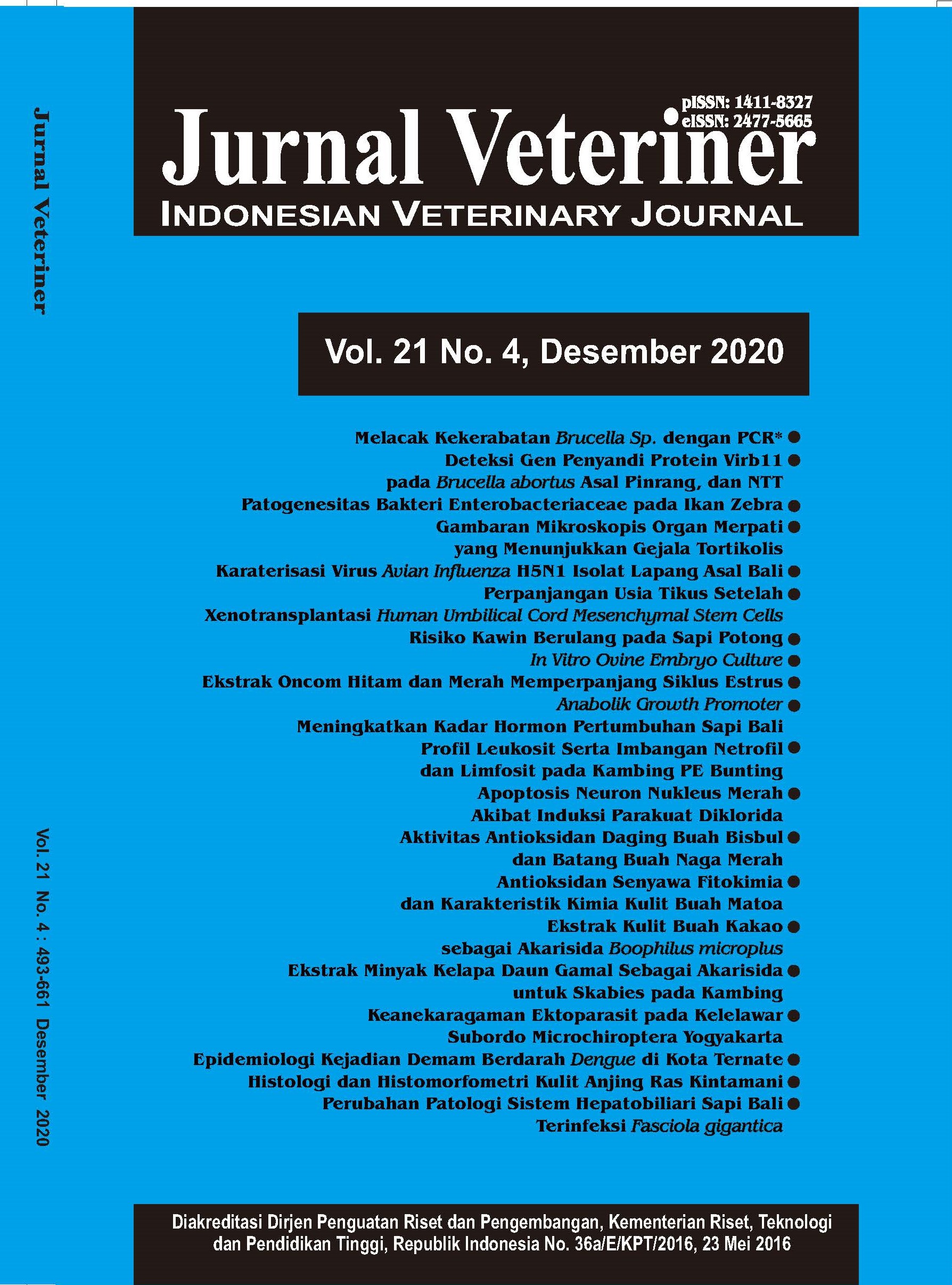Melacak Kekerabatan Brucella Sp. Menggunakan Teknik Reaksi Rantai Polimerase dengan Primer Pendek
TRACING THE KINSHIP OF BRUCELLA SP. BY USING A POLYMERASE CHAIN REACTION TECHNIQUE WITH A SHORT PRIMER
Abstract
Brucellosis is a zoonotic disease that has spread throughout the world and has an important impact on both human and animal health. The four species of Brucella that cause disease in humans are Brucella abortus, B. suis, B. melitensis and B. canis, and B. melitensis as the most pathogenic species. This Research used 46 samples were collected from Government Small Ruminants Abattoir in Bogor Regency. Thirty two spleen samples were examined by previous research and showed a positive result when were tested with CFT and PCR techniques, but sequencing has not yet been done. Fourteen serum and spleen samples were examined by the similar techniques. The Research aimed to determined the genetic relationship of Brucella sp. using a PCR technique with a specific short primer to B. mellitensis. Cloning technique was applied previously to five PCR positive samples before sequencing. Cloning and sequencing result of the Sample 91 showed higher homology to B. melitensis and B. abortus for 127 nucleotide lengths, 97.6% -100% and 99.2% -100% respectively. In the phylogenic tree, the Sample 91 was part of B melitensis sequences 1, 2,
and 3 with accession numbers LT962930.1 and LT962936.1, B abortus sequences 1 and 2 with accession numbers CP033079.1 and B. abortus sequence 1 with accession number CP034695.1. Sample of 95, 97, 7, and 13 have lower homologies than Sample 91.



















